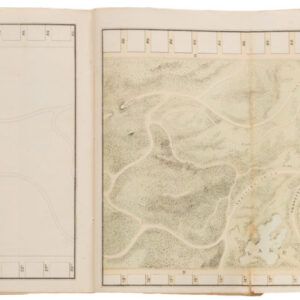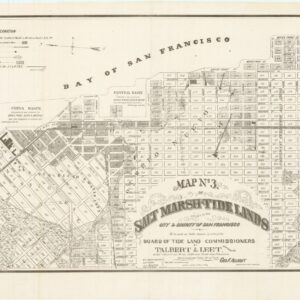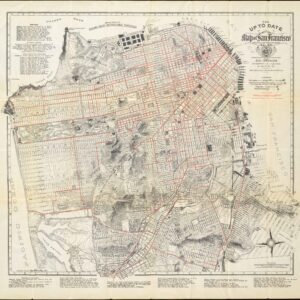Large-format circa 1892 Rand McNally promoting the development of South San Francisco.
South San Francisco. Issued By The South San Francisco Land & Improvement Co.
$2,600
In stock
Description
This map was issued to promote the development of South San Francisco as an industrial adjunct to its sister city to the north.
The mapmakers have used a number of interesting “persuasive” techniques to enhance the promotional impact of the image. Scale itself is used as a promotional tool, with South San Francisco drawn at a much larger scale than the rest of the map to give it prominence. The city of San Francisco is shown schematically and with a north/south compression of scale. Furthermore, three text boxes extol the area’s benefits, ranging from its sunny weather to the fact that San Mateo county “enjoys very low taxation.” It is noted that South San Francisco is in position to benefit from its strategic position along the only land approach to the city of San Francisco.
San Bruno, which was in existence since the 1860s, is not shown, though San Bruno Station is. Golden Gate Park is drawn in a trapezoidal shape.
South San Francisco was incorporated in 1908. Its present borders are considerably different than those depicted on the map.
At one time part of the 14,600 acre Rancho Buri-Buri, the site of the city was selected by G. F. Swift (for whom Swift Avenue is named) and purchased in 1890 by Peter Iler of Omaha in order to replicate the cattle stockyards and marketplaces common in Omaha. They partnered with some Chicago backers and formed two joint stock corporations, the South San Francisco Land and Improvement Company, and the Western Meat Company. Swift chose the name of South San Francisco to follow his other holdings in South Chicago and South Omaha.
The language in the map reflects this history, treating South San Francisco as a business enterprise. As such this map represents an important historical document for the role of land speculation in late 19th century urban expansion in the San Francisco peninsula.
Census
This map was lithographed in four colors. Earnshaw & Punson of Cincinnati, Ohio did the survey work and drew the map, which then engraved and published by Rand McNally & Co.
OCLC 83635006 (UC-Berkeley and Yale); 77896810 (Huntington); and 953571798 (Stanford). Rumsey 5293.
Provenance: M. Reese, 5/03, then Warren Heckrotte Collection (PBA, 2016).
Cartographer(s):
In 1856, William H. Rand opened a printing shop in Chicago and two years later hired a newly arrived Irish immigrant, Andrew McNally, to work in his shop. In 1868, the two men, along with Rand’s nephew George Amos Poole, established Rand McNally & Co. and bought the Tribune’s printing business. The company initially focused on printing tickets and timetables for Chicago’s booming railroad industry, and the following year supplemented that business by publishing complete railroad guides.
The first Rand McNally map, created using a new cost-saving wax engraving method, appeared in the December 1872 edition of its Railroad Guide. Rand McNally became an incorporated business in 1873; with Rand as its president, McNally as vice president, and George Poole as treasurer.
Rand McNally published its first road map, the New Automobile Road Map of New York City & Vicinity, in 1904.
South San Francisco Land & Improvement Co.Condition Description
Minor soiling and staining and minor wear along folds, bit of chipping to edges, but very good.
References
Bancroft has a copy dated 1891, also by Rand, McNally & Co.





